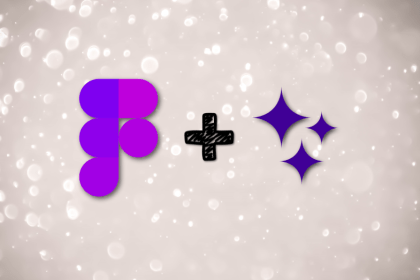Every designer knows that the design process is a messy endeavor filled with uncertainty. After all, that’s the nature of problem-solving work.

However, there are rituals and processes we can implement to reduce ambiguity and make the whole process more efficient. One of the solutions is to hold a design kickoff.
It’s hard to imagine a better way to start a design process on the right foot than to simply kick it off properly.
A design kickoff is a starting point of a design initiative. It’s all about bringing key people together, clarifying questions and doubts, aligning objectives, and sometimes even starting initial ideation.
Ideally, it should happen at the beginning of the Double Diamond process; however, I sometimes also have “mini kickoffs” when moving through different phases of the design process:
The length, size, and agenda for the kickoff depend on the complexity of the design initiative. I’ve had both kickoffs that were brief thirty-minute-long alignments, as well as robust, two-days-long workshop-like sessions that already combined a kickoff and some design exercises.
To me, even a design sprint is a type of design kickoff. In short, I don’t like limiting design kickoffs to some formal definition and process. Any meeting that helps you start the design initiative on the right foot is a design kickoff.
There are countless reasons why you should hold design kickoffs, but the most prominent are:
As boring as it sounds, you might be surprised how often people are misaligned.
Once, I was running a design initiative during which we were getting conflicting feedback from various parts of the organization. I realized we missed a proper kickoff at the beginning and tried to fix the mistake by doing it in the middle of the initiative — better late than never, isn’t it?
Turned out that two key stakeholders, even though seemingly aligned, had a completely different vision of what problems the solution needed to address — something that was difficult to spot during business-as-usual interactions.
Had we held a kickoff session early on, we would have saved a lot of time (and nerves) running in circles.
When you put all key players in one room, magic happens. New discussions and questions arise, which often lead to valuable insights and learnings.
Most of the time, I’m coming to a design kickoff with a flawed assumption that “we already know everything we need to know,” but almost without a fault, we always learn something new during the interactions that help us down the road. There’s always something new to learn from the design kickoff.
I have yet to find a designer who complained about the design kickoff. Although these events might sometimes be stressful for team members, especially if they need to interact with difficult stakeholders for the first time, ultimately, they tend to be happy that the meeting took place.
Design kickoff is a great way to give designers a seat at the table and engage them in an early discussion on direction versus just giving them a brief to deliver, which is a great way to truly empower the team. Removing the ambiguity early is always appreciated, and if you hold design kickoffs on-site, the extra team integration is worth the time.
I’ve once heard that people “don’t have time for design kickoffs.” It’s a perfect example of people being too busy chopping down trees to sharpen their saws.
Although design kickoffs require an initial investment from various stakeholders, the right expectations, settings, and alignment it brings pay off quickly.
Without a proper kickoff, it’s easy to waste a week constantly asking yourself if you understood the challenge right. Trust me, been there, done that.
As I’ve already mentioned, how a design kickoff looks depends heavily on the size of the initiative, its type, stage, and so on. It can range from thirty minutes to a couple of days. It also heavily depends on your and your team’s preferences and way of working.
So, instead of giving you a prescriptive how-to guide, let me leave you with a few tactics that’ll work in all scenarios.
The more prepared participants are, the more efficient the kickoff is going to be.
Instead of spending half of the kickoff explaining what the initiative is about and what insights you currently have, collect all known facts into an introductory deck and send it to participants before the meeting. Include:
When the kickoff happens, assume everyone is on the same page and has accustomed themselves to the fact pack. Although not everyone will actually read the fact pack beforehand, building the culture of moving forward regardless will motivate everyone to read through them the next time.
Although simplistic, this tactic is a truly game-changer. Anytime I forget or don’t have time to prepare proper fact packs beforehand, the kickoff is half as effective as it could be.
Whether it’s sharing details, discussing a plan of action, or ideating initial directions to pursue, make sure all your kickoff blocks are slightly too short.
I learned that the more time I allocate to a specific topic, the less disciplined and productive people tend to be. On the other hand, I have yet to find a better way to keep people energized and focused than maintaining a healthy sense of urgency.
If you don’t manage to cover everything, you can always follow up after the kickoff on specific details.
The longer and bigger the kickoff is, the more effort you need to put into designing truly engaging exercises and work sessions. Go beyond just open discussions and brainstorming.
I like to spice my kickoffs with various Liberating Structures to ensure everyone in the room is always engaged.
Two common challenges with kickoff audiences are:
Silver bullet? Rotate participants!
For every more extensive workshop or kickoff, I tend to differentiate two types of participants
This way, you can invite SMEs only for parts during which their expertise will be relevant. It’s also easier to convince a key stakeholder to come for one thirty-minute exercise versus participating in a whole-day meeting just because you need them for one part.
This one might be a tad controversial. The bigger the kickoff, the higher the chance it’ll accidentally move to the next design phases. For example, people start ideating solutions or discussing details.
In situations like that, I used to be the agenda police and cut these conversations short. We can always follow up after the kickoff, right?
But the truth is, we never did. Sometimes, the timing and the audience are just right to discuss important topics that get neglected otherwise. Occasionally, I even schedule a round two of a kickoff because we went too off-track on the first one.
My rule of thumb: if the topic is truly significant, let the group deviate, but kill all low-value conversations as soon as they appear.
Although, again, the actual kickoff depends heavily on the context, five agenda elements are always present, whether it’s a thirty-minute- or a week-long kickoff:
The first and foremost goal of a design kickoff is to ensure everyone is on the same page for what we are trying to achieve. Do a quick recap pitch, ask if there are any doubts about the fact packs everyone got, and maybe even ask everyone to describe the initiative in their own words.
I like to wrap up this session by creating a shared “vision board.” People tend to be more attentive to details when you start to actually write things down.
Ensure people know who plays what role in the initiative. Knowing whom to reach out to with what topic will make the collaboration significantly easier. If some people meet for the very first time, consider some friendly icebreaker exercise.
At the end of the session, make sure you have a clear distinction of accountabilities to avoid needless conflicts. RACI is an excellent tool for that.
The odds are that your initiative will depend on other teams or external factors. Make sure to identify them as soon as possible. Not only will it make them easier to manage and predict, but talking about them out loud in front of stakeholders is a great way to spread awareness of what can go wrong.
It’s also an essential input to proper initiative planning.
Although there’s no need to leave the kickoff with a detailed plan of action (although you can if you prefer to combine those two steps), you should leave the meeting with a high-level understanding of what will happen and when:
It sets expectations, gives input for further decisions (e.g., allocating more resources), and helps identify additional risks and dependencies.
Lastly, make sure to allocate some time for random Q&A. There’ll likely still be plenty of questions left even after the most productive kickoff ever:
A design kickoff is a great way to kickstart a design initiative. It helps reduce ambiguity, bring alignment, gather insights, and wrap up loose ends before diving into discovery mode. It’s also a great way to give designers a seat at the table and include them in the crucial decision-making process.
I’ve led and participated in both quick alignment sessions for a week-long initiative as well as week-long kickoffs for projects lasting half a year, and in all cases, the kickoff was an excellent investment.
Some of my best tips on how to make a kickoff great include:
Although I encourage you to tailor your kickoffs to your team’s needs, the things that you should always cover include:
However, remember there are no strict rules for kickoffs — explore different approaches and find the one that works best in your particular context.
One thing remains constant: time spent on planning and conducting a design kickoff is one of the highest ROI activities you can do for your design initiative.
Header image source: IconScout
LogRocket's Galileo AI watches sessions and understands user feedback for you, automating the most time-intensive parts of your job and giving you more time to focus on great design.
See how design choices, interactions, and issues affect your users — get a demo of LogRocket today.

Discover how to craft UX-friendly hero sections with examples, design tips, and strategies that drive engagement and conversion.

While Apple’s Liquid Glass can’t yet be perfectly recreated with CSS or Figma, we can still think about how to adopt the effect thoughtfully in our designs.

Figma Make is here to automate your design-to-code workflow. I tested it. Let’s talk about the good, the bad, and the straight-up weird.

After designing AI search systems, I’ve seen what builds trust — and what kills it. Here’s my take on what really works.